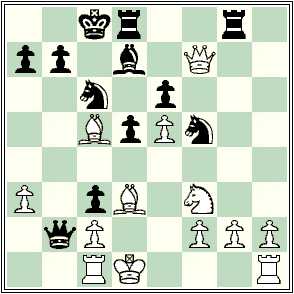Emanuel Berg’s The French Defence Volume 2 arrived last month: 304 pages of ‘Grandmaster Repertoire’-style discussion on the Winawer with 7. Qg4, covering both the Poisoned Pawn and the 7. … 0-0 line. I can’t really give a full review yet: I believe that while you can see fairly quickly when an openings book is bad, it takes time to judge a good book. After all there have been many other books on the same subject, to say nothing of articles, game annotations, and the like, all of whose authors these days have access to the same engines and databases, so a really good book has to dig deep to provide worthwhile new analysis, evaluations and improvements. This inevitably takes some time to evaluate properly–it certainly can’t be done with the ‘read and nod’ method–and the better the book, the longer it takes.
By this standard, it will take quite a while to evaluate Berg’s book, because so far it seems very good indeed: it’s very thorough, digs well beyond existing analysis and evaluations, and it has comprehensive coverage, even of side lines.
 The latest issue of The New Winawer Report considers two such side lines. Again (“yet again”–but this month marks the first anniversary of the newsletter, so please indulge me) it deals with the 10. Kd1 line in the Poisoned Pawn, which Berg treats quite thoroughly, with two chapters totalling 33 pages.
The latest issue of The New Winawer Report considers two such side lines. Again (“yet again”–but this month marks the first anniversary of the newsletter, so please indulge me) it deals with the 10. Kd1 line in the Poisoned Pawn, which Berg treats quite thoroughly, with two chapters totalling 33 pages.
Of course it’s no fun if everyone agrees on everything, so the new issue differs in some ways from Berg and from John Watson’s (also excellent) Play the French, 4th edition. Both books give an accurate overall assessment, but neither gives the strongest continuations.
The diagrammed position is from Crespo-Veen, 19th World corr Ch ½-final-01, 1991-97. White threatens Ke2 and Rb1 trapping the black queen. Black played 17. … Rde8? followed by … Nd8 and drew. Much better is 17. … Rxg2!N. After 18. Ke2 Rg4 19. Rb1 Re4+ 20. Bxe4 dxe4 White successfully rounds up the queen, but after 21. Rxb2 exf3+ must either lose his own queen (22. Kxf3 Nxe5+; 22. Kd3 Be8+) or allow Black to promote (22. Ke1/f1?? cxb2).
